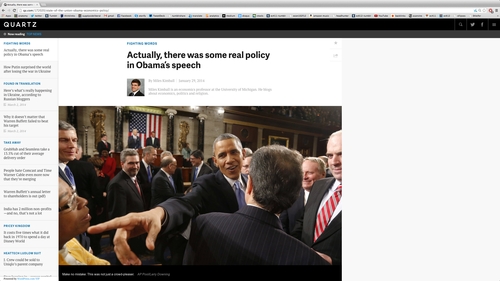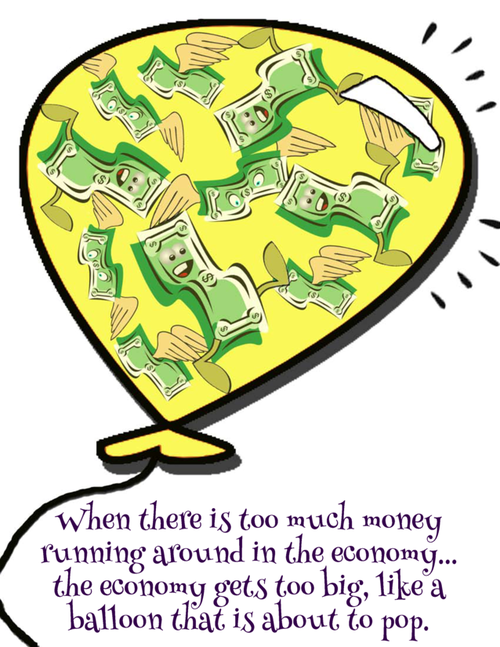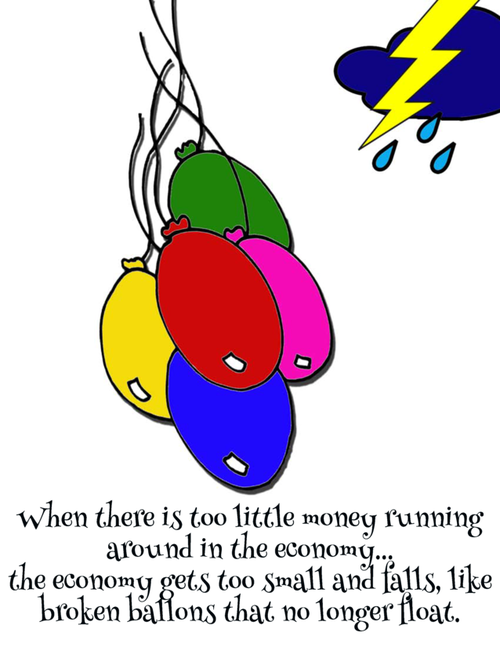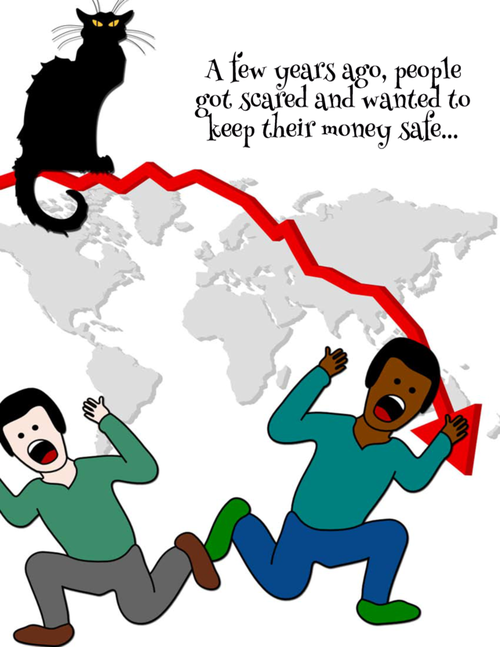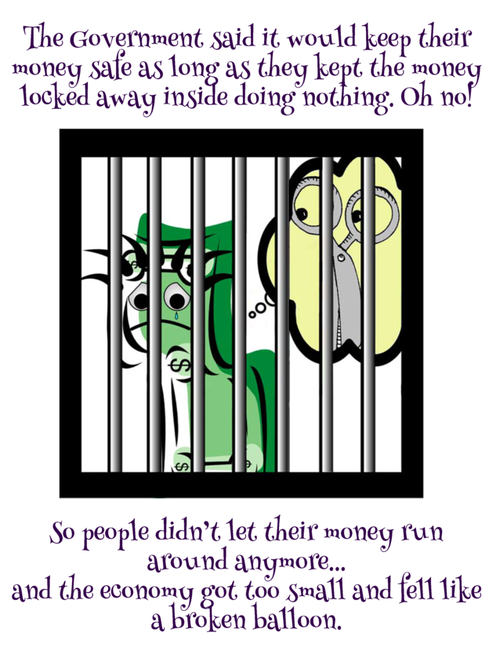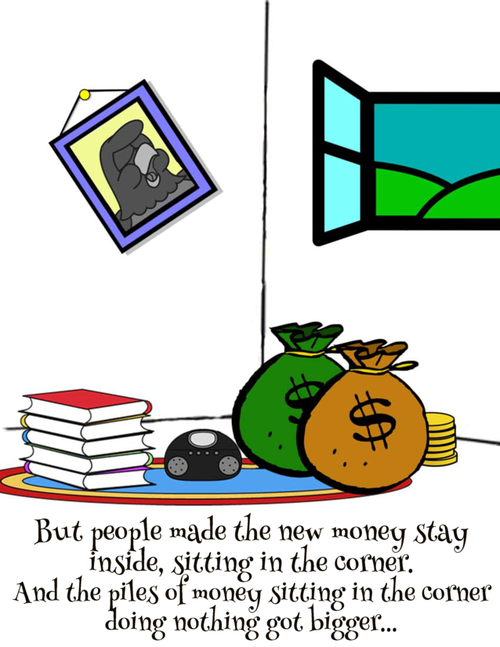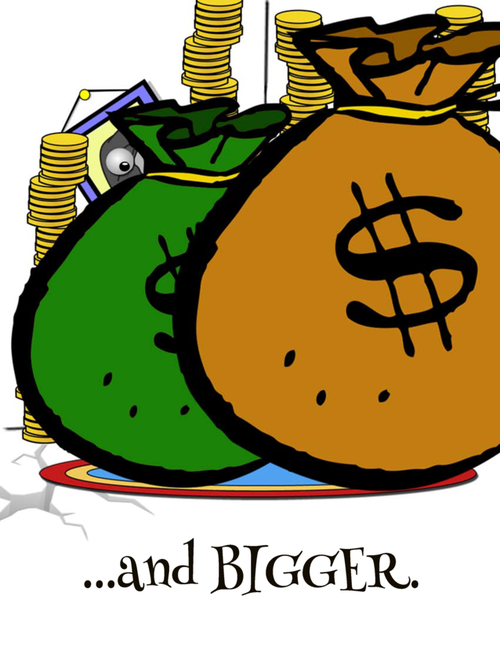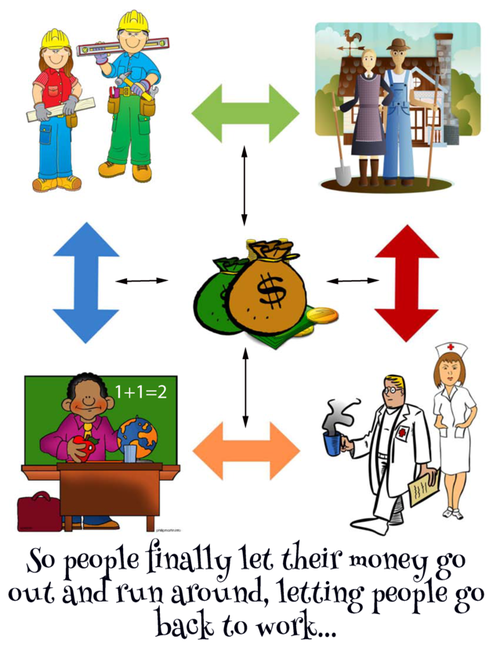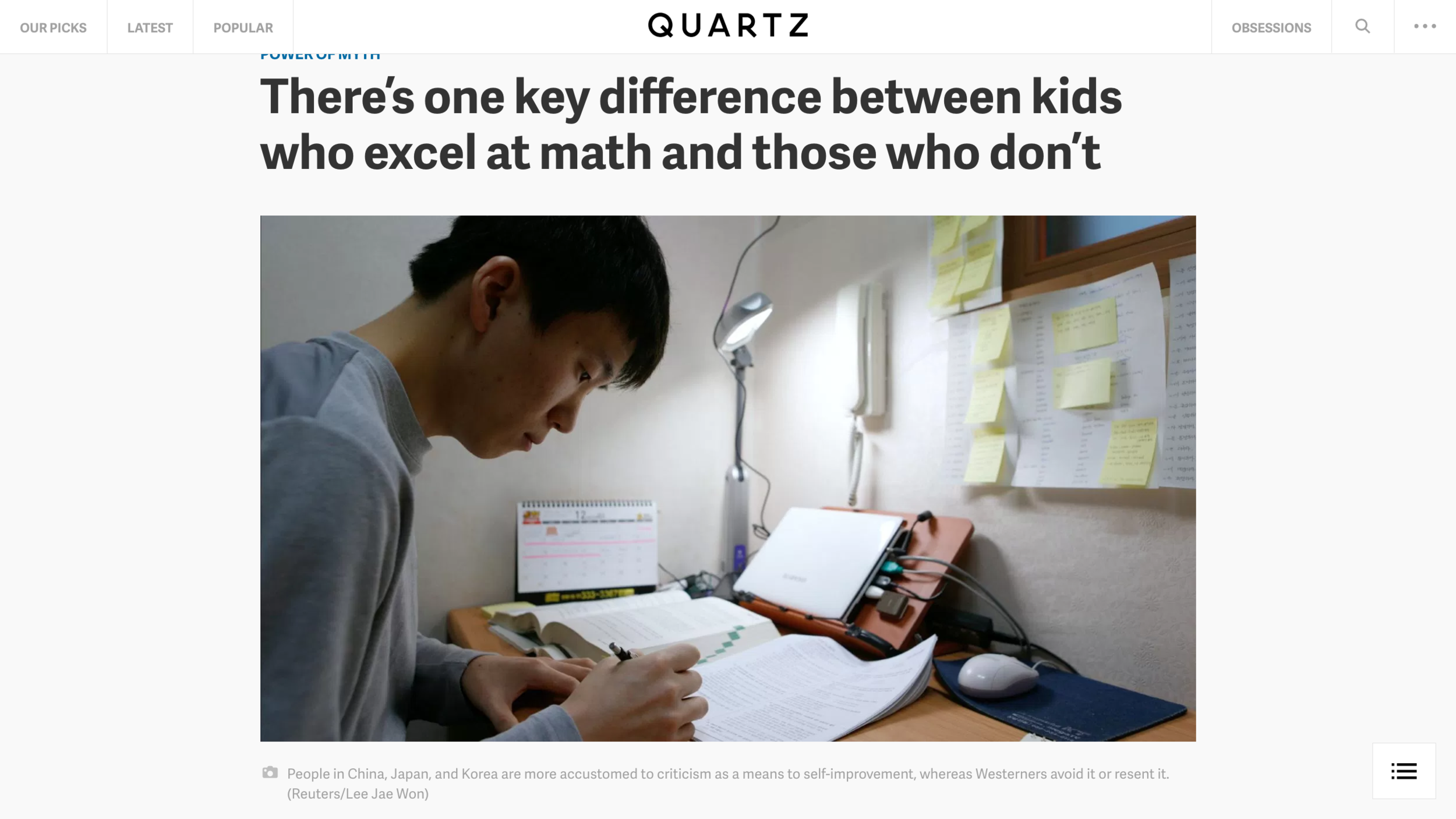A personnel shakeup at the US Federal Reserve Bank of Minneapolis last week at first flew under the radar; by the time the Minneapolis Star-Tribune reported the news, followed by other news outlets, it had been percolating through the economist grapevine for weeks. But the world should be paying attention, because the shakeup may be a part of big changes that are happening at the Fed, as well as a tectonic shift in the field of economics itself.
What Happened
Two of the Minneapolis Fed’s most eminent and long-serving economists, Patrick Kehoe and Ellen McGrattan, have been fired. The Star-Tribune article makes it clear that their departure was not voluntary on the part of either researcher. (Fortunately, both Kehoe and McGrattan will be fine, career-wise—both have stellar publication records and tenured professorships at the University of Minnesota.)
Why did this happen? We cannot know, especially since Minneapolis Fed Chief Narayana Kocherlakota isn’t giving his side of the story. But Jeffrey Sparshot makes this possible connection in the Wall Street Journal:
Mr. Kocherlakota switched in 2012 from opposing some of the Fed’s easy-money policies to calling for more aggressive Fed action to spur economic growth and employment. The move reflected a shift in his views on persistently high unemployment: He went from thinking the cause was largely structural (and thus could not be fixed with monetary policy) to thinking it was largely due to weak demand (which means it could be addressed through policies aimed at boosting demand).
In other words, although the Minneapolis Fed shakeup could be due to any number of reasons—a personality conflict, a disagreement over the Fed bank’s mission, etc.–one possibility is that the personnel changes are related to Fed officials’ changing attitude toward business cycles. To understand that possibility, it is crucial to understand an academic controversy that has been simmering for decades.
Freshwater vs. Saltwater
Patrick Kehoe, one of the economists dismissed from the Fed, is a key figure in a school of economics called “Freshwater Macroeconomics” (the other, Ellen McGrattan, is his frequent co-author). The labels “Freshwater” and “Saltwater” go back to the arguments and new ideas generated by the double-digit inflation in the 1970s. The names refer to the geography of key combatants in that period, when economists at the University of Chicago, Carnegie Mellon University and the University of Minnesota spearheaded the “Rational Expectations Revolution.” They believed that people are very, very smart and sensible in their economic decisions. Taken to its logical extreme, the idea of economic rationality led the Nobel-winning Freshwater pioneer Edward Prescott to argue that recessions are not economic failures, but instead are inevitable, healthy outcomes of economies responding to the uneven pace of technological progress. In other words, Prescott and the economists who followed his lead said that the government shouldn’t try to fight recessions.
If the Fed prints money to try to stimulate demand, they say, it will only succeed in creating inflation rather than reviving the economy. And given this view of rationality, Freshwater macroeconomics often pushes the idea that the government should keep its hands off the economy in other policy domains as well.
Prescott and his fellow-travelers established a bastion for this apotheosis of Freshwater macroeconomics at the University of Minnesota and the Minneapolis Fed. Patrick Kehoe carries that torch, being one of the greatest of the Freshwater macroeconomists to follow the founding generation, and one of the most extreme in his views.
The Freshwater school gained enormous clout in the ‘80s. But in the ‘90s, there was a counterattack from the coast. The Saltwater macroeconomists believed that recessions were economic failures, and that monetary policy was important in fighting them. Led by Michael Woodford, they adopted the tools and language of the Freshwater economists, and managed to convince many of their Freshwater brethren to reluctantly agree that monetary policy can, in fact, boost the economy. But one bastion of hard-line freshwater thinking held firm: “Minnesota macro.” The researchers at the University of Minnesota and the Minneapolis Fed have largely hung onto the belief that monetary policy can affect inflation, but can’t fight recessions.
But there is good reason to think that this view is losing credibility at the Fed.
Narayana Kocherlakota is an influential Fed official, and as such is an important bellwether of Fed thinking. His views have shifted decisively toward believing that monetary policy can stabilize the economy. What changed his mind? The answer is obvious: the Great Recession, and the failure of large purchases of long-term government bonds and mortgage-backed assets—QE—to create inflation. It makes all the difference in the world when the number one event shaping the questions macroeconomists ask is no longer the Great Inflation of the 1970s, but the Great Recession that still casts its shadow over the world.
Nor is Kocherlakota the only Fed official to change his mind. So even if the Minneapolis Fed shakeup wasn’t caused by a clash of ideas, the Fed’s shift toward Saltwater macro is a real phenomenon, and needs to be understood.
Freshwater Not So Fresh?
Whether people realize it or not, the thinking behind macroeconomic policy has such a decisive influence on the world that it is worth the effort for everyone to try to understand the central ideas and characteristics of the key schools of macroeconomics. Even many non-economists will remember John Maynard Keynes and Milton Friedman; it is these economists whose ideas led to the theories of the Saltwater school. But very few people even know what Freshwater macro is. We hope to give you a little introduction.
We are hardly unbiased teachers for such an introduction; Miles has been an unabashed partisan of the Saltwater side since 1985, and Noah has often criticized Freshwater macro on his blog. But it is easier to see the failings of a rival school of thought than the failings of one’s own, so we feel it is okay to point out the weaknesses of Freshwater macroeconomics, and will leave to others the task of pointing out the failings of our own school of Saltwater macroeconomics. Besides our experience as partisans, we both have the advantage of the time we have spent at the University of Michigan, where both Freshwater and Saltwater macroeconomists have coexisted on very good terms for the 26 years Miles has been on the faculty and the years Noah spent as a graduate student there. So we hope we can give a critical, yet stillsympathetic view of Freshwater macroeconomics.
One reason it is easy for us to be sympathetic with Freshwater macroeconomics (at least when away from the heat of the battle) is that the central tenets of Freshwater macroeconomics simply exaggerate the main conceits of economics itself. Relative to other social scientists (and even more relative to the general public) economists (a) emphasize the idea of rationality, (b) take great pride in their skill at mathematics, and ( c ) think about the world by using formal models. These are all things that Freshwater macro has taken to extremes.
The idea of rationality is both a great strength and the greatest blind spot of economics. Economists routinely pretend in their models that everyone (with the possible exception of government officials) is infinitely intelligent—or at least smart enough to make excellent economic decisions, even in very complex environments. Although there is a touching humility to this pretense (not always matched by humility of economists in relation to the real flesh-and-blood people they interact with), it is not true. As a (good or bad) approximation to the truth, the assumption that everyone is very, very smart is a shortcut economists use to avoid impossible complications in their already difficult models; it is much easier to study the one correct economic decision in a given situation with given objectives than the thousands of ways someone could get things wrong. Sometimes economists forget that perfect rationality is only an approximation. Within Freshwater macroeconomics, however, to doubt perfect rationality is to commit at least a minor heresy.
On mathematical pride, we realize we are a pot calling the kettle black. Early in his career, Miles received a memorable critique of one of his papers from an anonymous referee that scolded him for an excessive pride in engineering mathematics. The key point he took was that, in economics, taking too much pride in one’s mathematical pyrotechnics can lead to a neglect of fully arguing one’s case and fully assessing the broader arguments at stake in understanding an economic phenomenon. (On the role of math in economics, also see 1, 2.) Among Freshwater macroeconomists, the stock placed in mathematical skill is great enough that they have played a major role in making the advanced mathematics of “Real Analysis” a prerequisite for graduate school in economics, despite what we consider the very limited relevance of Real Analysis for understanding how the economy works. (As far as extra-high-level math goes, we think Convex Analysis and Perturbation Theory would be more useful.)
Advanced economic models are not easy to describe. Consider UCLA (now emeritus) professor Axel Leijonhufvud’s 1973 spoof (pdf), “Life Among the Econ.” It begins:
The econ tribe occupies a vast territory in the far North. Their land appears bleak and dismal to the outsider, and travelling through it makes for rough sledding; but the Econ, through a long period of adaptation, have learned to wrest a living of sorts from it. They are not without some genuine and sometimes even fierce attachment to their ancestral grounds, and their young are brought up to feel contempt for the softer living in the warmer lands of their neighbours, such as the Polscis and the Sociogs. …
Among the Econ,
… status is tied to the manufacture of certain types of implements, called “modls.” … Both the tight linkage between status and modl-making and the trend toward making modls more for ceremonial than for practical purposes appear, moreover, to be fairly recent developments, something which has led many observers to express pessimism for the viability of the Econ culture.
This assessment was too pessimistic. Economics has thrived since 1973, and well-crafted economic models have a lot to do with that success. But “Life among the Econ” gives a good picture of the role of bad models in economics—to show off the skill of the model builder without necessarily shedding any light on the world we live in. Part of the genius of economics is boiling down all the complexity of the real world to a few essential aspects that can be studied in depth. But if it is possible to carefully pare away less important aspects of the world in order to think deeply about the more important, it is also possible to carelessly pare away aspects of the world that don’t accord with an arbitrary set of traditions about how economic models should be done. In the case of Freshwater macroeconomics there is a large set of purity taboos prohibiting certain model elements (elements Saltwater economists think are necessary to explain the world). Freshwater macro also insists on following a certain standard template–complete with mathematical and empirical tools and conventions—that has been handed from Prescott and other early Freshwater pioneers. That template is seldom reexamined, leading many outsiders to believe that Freshwater macro is not so fresh.
Unlike politics, macroeconomics has been getting less polarized over time. Even before the Great Recession, the number of moderates who put Saltwater elements in Freshwater models or Freshwater elements into Saltwater models was growing over time, and the boundary between Freshwater and Saltwater economics blurred considerably. But the “Minnesota macro” folks remained the purest of the pure in their Freshwater convictions. In 2008, on the eve of the crisis, even as Saltwater economist Olivier Blanchard published a paper arguing that the two schools had essentially reached agreement, Kehoe published his own paper arguing vehemently that models with any Saltwater taint (in particular, the so-called “New Keynesian” models) were fundamentally flawed.
The Great Recession Tips the Scales
A few months later, at the end of 2008, America tumbled into its biggest economic slump since the Great Depression, soon followed by much of the rest of the world. Freshwater macroeconomists were left scratching their heads. How could this calamity represent the efficient outcome of a well-functioning economy? But the Saltwater New Keynesians—who included Fed chairman Ben Bernanke—had an answer: the economy had malfunctioned, and America needed the Fed to get us out of the hole. Bernanke and the Fed responded first by extraordinary measures to contain the financial crisis that was the immediate source of trouble, then lowering interest rates to zero and beginning an unprecedented campaign of Quantitative Easing.
As QE ramped up, disputes broke out among Fed economists. Some, like Philadelphia Fed president Charles Plosser (himself a noted Freshwater researcher) and Minneapolis Fed president Narayana Kocherlakota, argued that QE would put us in danger of inflation. But as the Fed’s printing presses rattled on and inflation failed to materialize, some “hard money” advocates had second thoughts. Last year, Kocherlakota declared that he had changed his mind, and now supported QE.
Whither the Freshwater School?
So what does it all mean? We are strong proponents of the idea that scientific progress—especially in economics—depends on a vigorous debate among widely divergent points of view. (See 1, 2, 3, and in the extreme 4, 5, 6.) So Freshwater macroeconomics has been a crucial part of the scientific ecosystem. Within the Federal Reserve System, Freshwater macroeconomists have played an important devil’s advocate role by highlighting potential dangers that saltier macroeconomists might be tempted to overlook in their eagerness to print money in search of economic recovery.
But we believe it would hinder scientific progress in macroeconomics if purist Freshwater views were to play a predominant role going forward, and could lead to policies whose costs would run into millions of lives disfigured by needless unemployment and uncounted trillions of dollars in lost GDP.
Scientifically, Freshwater macroeconomics plays an important role in laying out how the world should be if everyone thought like an economist. And improvements on Prescott’s Real Business Cycle Theory in particular have the potential to be a theory of where the economy should end up once short-run adjustments are complete. But gaining the insight we need into the world as it is requires:
- accepting the existence of important aspects of the world that we don’t fully understand (such as prices and wages that don’t seem to adjust as quickly to economic circumstances as it seems they should) and incorporating them into our models (in ad hoc ways if necessary, or as brute facts),
- bringing limitations on people’s ability to process information into our models (even though doing this will require arduous work), and
- recognizing the complexity of human psychology.
Whither Monetary Policy?
In the conduct of monetary policy, it makes sense to give primacy to those who actually believe that monetary policy matters. The logic is straightforward. If what the Fed or other central bank does doesn’t matter, then any monetary policy is okay. But if monetary policy does matter, then those who believe that it matters are likely to have a better handle on how to deal with that weighty fact. Things aren’t quite so simple, since even purist macroeconomists believe that monetary policy affects inflation. But that just means that those who believe monetary policy matters more broadly can be trusted with many judgments as long as they are constrained to keep inflation from going up too high or falling down too low in a long-lasting way. But that is a rule for the conduct of monetary policy that is felt deep in the bones of almost all macroeconomists, Saltwater as well as Freshwater. (There is a legitimate question of what the right long-run level of inflation is. Most central banks say 2%. Some Saltwater macroeconomists say 4%. Miles wants to make it possible to safely have zero inflation.)
There can be other effects of monetary policy besides recession-fighting (which purist Freshwater macroeconomists discount) and affecting inflation. Effects on financial stability are the most worrisome. Pointing out such possibilities is where Freshwater macroeconomists in the Fed and other central banks can still play a constructive role. But to the extent that recession-fighting and inflation are the main effects of monetary policy, it seems to us that a saltier approach that believes in the existence of both of these effects–and pays due attention to inflationary dangers–is a better place to start deliberations than a purist Freshwater approach that dismisses the possibility of recession-fighting from the get-go. And it seems clear that Fed officials like Kocherlakota, Lacker, and others have been shifting toward the saltier view.
What the Minneapolis Shakeup Means
Of course, this still leaves the question of whether the Minneapolis Fed shakeup is a part of this intellectual shift.
Kehoe and McGrattan’s dismissal drew loud protests from other members of the Freshwater school. Ed Prescott, the father of purist Freshwater macro, was quoted in the Star-Tribune article as saying “It sends a bad message…Something very good is breaking down rapidly.” Steve Williamson, a Freshwater economist at Washington University, blogged that Kocherlakota “seems intent on destroying the [Minneapolis Fed] as a research institution.” So whether or not the firings had anything to do with economic theories, Freshwater folks are concerned, and with good reason. A key part of the genesis of Freshwater macro was a desire to say something about monetary policy (i.e., why not to use it). If the Fed refuses to listen to leading Freshwater voices, then a big chunk of the real-world influence of this school of thought will be gone.
In any case, speculating on the reasons for what ultimately might boil down to simple personality conflicts is not our purpose here. Nor do we seek to offer any judgment on Kocherlakota’s personnel decision, which could have far-reaching impacts on the relationship between central banks and universities and the type of employment contracts offered by Fed banks. Instead, we want to highlight the tectonic shifts in economics itself. From that perspective, the shakeup may turn out to be part of the understandable rebalancing of macroeconomics in the Saltwater direction, as economists try to comprehend the Great Recession and figure out how to avoid an encore.


